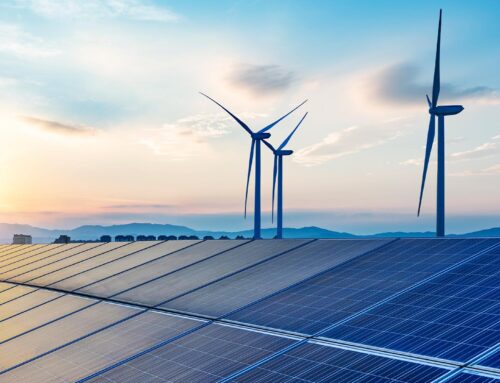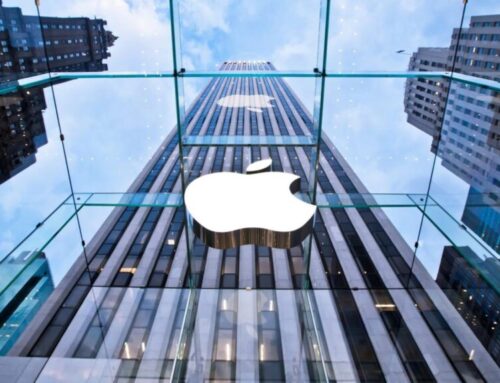Why Musk Is Building Batteries in the Desert
September 12, 2014
Sep 11, 2014 5:01 PM PT

Tesla’s planned 5-million-square-foot ‘gigafactory’ wouldn’t just be the biggest battery factory in the world. It would be one of the biggest factories in the world, period. But hours before CEO Elon Musk took the podium last week to tout the $5 billion facility came August sales numbers for electric vehicles and a spate of news stories about how U.S. interest for electric cars has stalled.
So what gives? Why would Tesla build capacity for half a million car batteries a year if no one is buying? Four charts below tell the story.
First the bad news.

Source: Bloomberg Data, Electric Drive Transportation Association, Ward’s Automotive Group
August brought another month of electric-car sales that came up short of previous highs. Interest isn’t falling, but at four percent market share for combined sales of hybrids and plug-ins, people aren’t exactly clamoring for them. The dark blue shows hybrids, the light blue shows anything with a plug; stack them together and you’ve got what’s known as the electrified-vehicles market.
But here’s the thing: the “stall” is happening entirely in the category of plugless hybrid vehicles (shown above in darker blue). These are gasoline engines backed by fuel-saving battery drive systems. The batteries are primarily nickel-metal hydride like those found in the standard Toyota Prius — not the high-efficiency lithium ion batteries that Elon Musk wants to crush the market with.
Here’s what’s happening in the smaller subset of cars that don’t require liquid fuel to roll:
Time to plug in.

Excludes trucks and SUVs. Source: Electric Drive Transportation Association, Bloomberg Data
The chart above shows the exponential rise of U.S. plug-ins. The light purple signifies rising monthly sales, while the dark purple shows cumulative sales since December 2010.
The rise of the plug-in has been fast, but the category is still diminutive. Most car trackers put plug-in sales at a fraction of a percent of U.S. vehicles sales. But just as it’s misleading to lump in growth with hybrid gas cars, comparing plug-ins to all vehicles on the road isn’t apples to apples. Plug-in SUVs are only just starting to hit the market.
The chart below shows plug-ins as a share of U.S. car sales, excluding those larger vehicles.
Quiet, but with great acceleration.

Source: Bloomberg Data, Electric Drive Transportation Association, Ward’s Automotive Group
For 2014, plug-ins average 1.5 percent of cars sold in the U.S. That’s still not a lot, and the trendline for market share appears more incremental than exponential. At this rate, plug power wouldn’t be the dominant form of fuel until the end of the century.
And that excludes the ever-popular SUV category. The BMW i3 and the Mercedes-Benz B Class arestill rolling out. Tesla and Toyota recently ended their collaboration on a $50,000 plug-in version of a RAV4 after just 2,000 units sold in two years. Like the Nissan Leaf, the RAV4 was hampered by a limited battery range: 100 miles. Musk told reporters in Tokyo last week that he envisioned a larger project with Toyota than the RAV4 “maybe two or three years from now.”
Tesla’s first SUV, the Model X, is set to go on sale in the first half of next year, complete with a third row, space-age falcon doors (pictured above), all-wheel drive and little compromise on the Model S’s 265-mile range. Here’s a sneak peak of pre-orders for the Model X, based on self-reported waitlist numbers tracked on a Tesla Motors Club forum (Tesla doesn’t release pre-order tallies). A reservation for the luxury Model X requires a $5,000 deposit.
Americans heart SUVs.

Source: Tesla Motors Club
These reservation numbers are significantly higher, and picking up faster, than reservations of the Model S prior to its June 2012 ship date.
Still, to justify the gigafactory, it would take additional market forces to bend the curve skyward on plug-in market share. That’s exactly what Tesla is working on. The biggest obstacles to plug-in adoption are availability of charging stations, range, charge time and cost. Here’s where those things stand:
Charging stations: By the end of the year, there will be more than 5,000 electric charging stationsoperating in the U.S., according to the U.S. Energy Department. In the first half of 2014, more stations were opened than from 1970 to 2011 combined.
Range: Drivers want to know they can make their daily commute, get stuck in unexpected traffic and stop by the store for some emergency pickles without having to worry about being stranded. The best-selling Nissan Leaf, at $30,000, leaves room for worry with its 84-mile average range. The high-end Tesla Model S, at more than twice the price, has an EPA-rated range of 265 miles. That’s a lot of pickle stops.
Charge time: Home charging of a Tesla is still a commitment at 58 miles per hour of charge. The Tesla Supercharger stations, on the other hand, get 170 miles in 30 minutes. Musk has opened up the system’s design for other carmakers to adopt.
Cost: Tesla hasn’t released the official price tag for the Model X, but it’s expected to be in the same luxury range as the Model S, which starts at $60,000 for a version with smaller battery. Bringing down the cost of batteries will be key to plans for a more-affordable Model 3, still years away from market. Musk estimates the gigafactory will reduce the cost of lithium-ion battery capacity by 30 percent.
Musk’s diamond factory.

Tesla Motors’ Gigafactory rendering. Source: Tesla Motors
Last week, Tesla released sketches of the future plant. It’s powered by renewable energy and shaped like a diamond. So why has Musk designed a gigafactory to produce batteries for half a million cars a year (twice the number that’s been put on the road by all companies combined)? Because it’s increasingly looking necessary.
Deutsche Bank analyst Rod Lache last month increased his estimate for sales of the Model S and Model X to 129,000 units in 2017, from a previously estimated 83,000. Tesla can reach its 500,000 annual run rate before the end of the decade, Lache said, in time to put the gigafactory to full use.
Tesla’s growth will be “much steeper, their mix will be much richer, and their costs will ultimately be much lower than we previously assumed,” Lache wrote in a report on Aug. 11.
This doesn’t mean you should rush out and buy Tesla stock. Just 11 out of 20 analysts tracked by Bloomberg give the company a “buy” rating, and the stock price is 261 times estimated earnings, compared with a 12.5 estimated P/E for Ford Motor Co. Even Musk admitted last week that the stock price is “kind of high” right now.
Still, it’s easy to get caught up in Musk’s vision for the future of cars. Defying skeptics, Musk has established the biggest U.S. solar company by market value, built a private space companythat’s making deliveries to the International Space Station, and has conjured a $35 billion car company out of thin air.
Now the dude’s got diamonds in his eyes.
More from Tom Randall:
- A Comet. We’re About to Harpoon a Comet.
- California’s Record Heat Is Like Nothing You’ve Ever Seen… Yet
- Musk Reveals What Tesla’s Solar Backup Battery May Look Like
- World on Track for its Third-Hottest Year
- What’s Better Than Kindle Unlimited for $120 a Year? This Free Alternative
Follow @tsrandall on Twitter for more stargazing.
Search
RECENT PRESS RELEASES
Related Post




